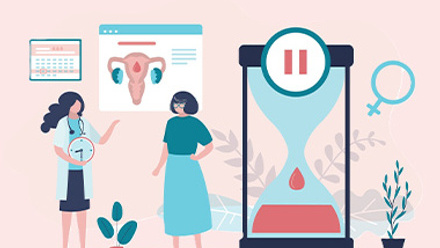Three ways to get employees to care about their cholesterol

Let’s face it, unless we’re faced with a picture of our own current and potential future state of health, as opposed to catch-all messaging, we’re unlikely to stop, pay attention and act.
October is National Cholesterol Month: a perfect opportunity for you to raise awareness of the health implications of high cholesterol levels among your employees via much more personalised means than your average poster campaign.
The hard facts
It’s worth a quick look at the ‘why it matters’ before getting into the ‘how to achieve this’.
Having high cholesterol has been associated with increased risk of cardiovascular disease (or CVD – the collective name for heart diseases and blood vessel diseases) and stroke. In fact, coronary heart disease remains the number one killer in the UK, according to the charity Heart UK.
CVD is the most common cause of death before age 65, accounting for 16 per cent male and 10 per cent female deaths. And it’s estimated to cost the UK economy £19 billion: 46 per cent direct healthcare costs; 34 per cent productivity losses; and 20 per cent to informal care of people with CVD.
Over half of all UK adults in England have raised cholesterol (>5mmol/l). Healthy adults should aim for total cholesterol of 5mmol/l or less and low-density lipoprotein (LDL) – cholesterol of 3mmol/l or less.
Good and bad cholesterol
Justin Jones, Professional Head of Physiology at Nuffield Health – one of Generali’s Wellbeing Investment Matching partners – explains that high-density lipoprotein (HDL) cholesterol is the good, or as he prefers to term it “favourable”, cholesterol. This picks up excess cholesterol in your blood and takes it back to your liver where it’s broken down and removed from your body.
“The best ways to boost it are to do more aerobic exercise, consume more Omega-3 from things like oily fish, or just be female!” says Jones. “Women have more HDL cholesterol on the whole but there’s a misconception that this means cardiovascular disease is a male thing. It isn’t. Women are still at risk but they tend to get it a decade later.”
LDL is the bad stuff. High levels of LDL can eventually build up within the walls of your blood vessels and narrow the passageways. Sometimes a clot can form, causing a heart attack or stroke.
“Your LDL levels are likely to be elevated if you consume a lot of sugar, trans fats in things like cakes and processed foods. This puts you at risk of inflammatory disease and particularly heart disease,” adds Jones.
The personalised sell
Here are our top three tips to give your cholesterol awareness campaign more meaning.
1. Offer your employees personalised assessments for tailored health
Health assessments have moved on. Whilst you can still use the traditional versions structured according to broad aspects such as age, gender or perhaps seniority within a business, it’s now possible to get something completely tailored to individual need.
Some providers now advocate assessing an individual’s risk first using a simple, clinically validated, questionnaire with tools built in to help predict future risk, taking into account family history.
This ‘clinical brain’ identifies and prioritises a list of 30-minute modules specific to the individual’s health risks, with the most relevant at the top: from diabetes prevention and routine heart check to cardiovascular performance.
Following a core health assessment, involving a series of biometric tests, the individual will then have focused health assessment modules to reduce their future risk of disease. How many modules your employees take part in depends on your budget.
For each module a clinician will do specific tests and will speak to the individual about lowering their risk. They will also use coaching expertise to help them change lifestyle behaviours.
2. Focus on a healthy weight loss programme
You could make use of material to which you’ll probably already have access if you have an Employee Assistance Programme: from confidential telephonic and face-to-face counselling to weight loss tools, articles and webinars.
Alternatively, the kind of tailored health assessments details in point one above also tend to include modules specific to health weight loss, including self-directed weight loss programmes.
There are also guided options available, if needed, for those who require the support of nutritionists and personal trainers – for example, where an individual is significantly overweight or struggling to stick to a diet.
3. Introduce regular, comprehensive eye examinations
This isn’t a typo! A comprehensive eye examination, such as that offered by VSP Vision Care, also a Wellbeing Investment Matching partner, can often detect the first signs of chronic conditions, including high cholesterol.
Jeremy Chadwick, Managing Director at VSP, explains that a recent study conducted on behalf of the provider by the Human Capital Management Services (HCMS) Group in the US, revealed that VSP optometrists were the first to uncover signs of elevated cholesterol in 62 per cent of cases.
This, in turn, provided a significant opportunity for those individuals to seek additional testing to confirm a medical diagnosis and begin appropriate lifestyle changes or medication to mitigate the condition.
Find out more information on Generali’s Wellbeing Investment Matching.
The author is Colin Hawes, head of group income protection claims and medical underwriting at Generali Employee Benefits UK.
This article was provided by Generali Employee Benefits UK.
Supplied by REBA Associate Member, Generali Employee Benefits Network
Generali Employee Benefits' solutions are to protect and enhance the wellbeing of their workforce.







